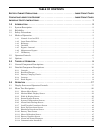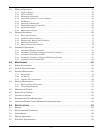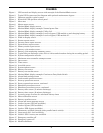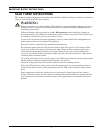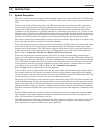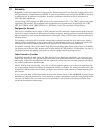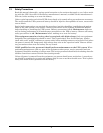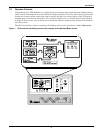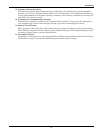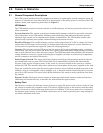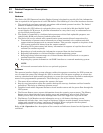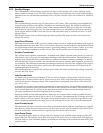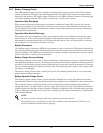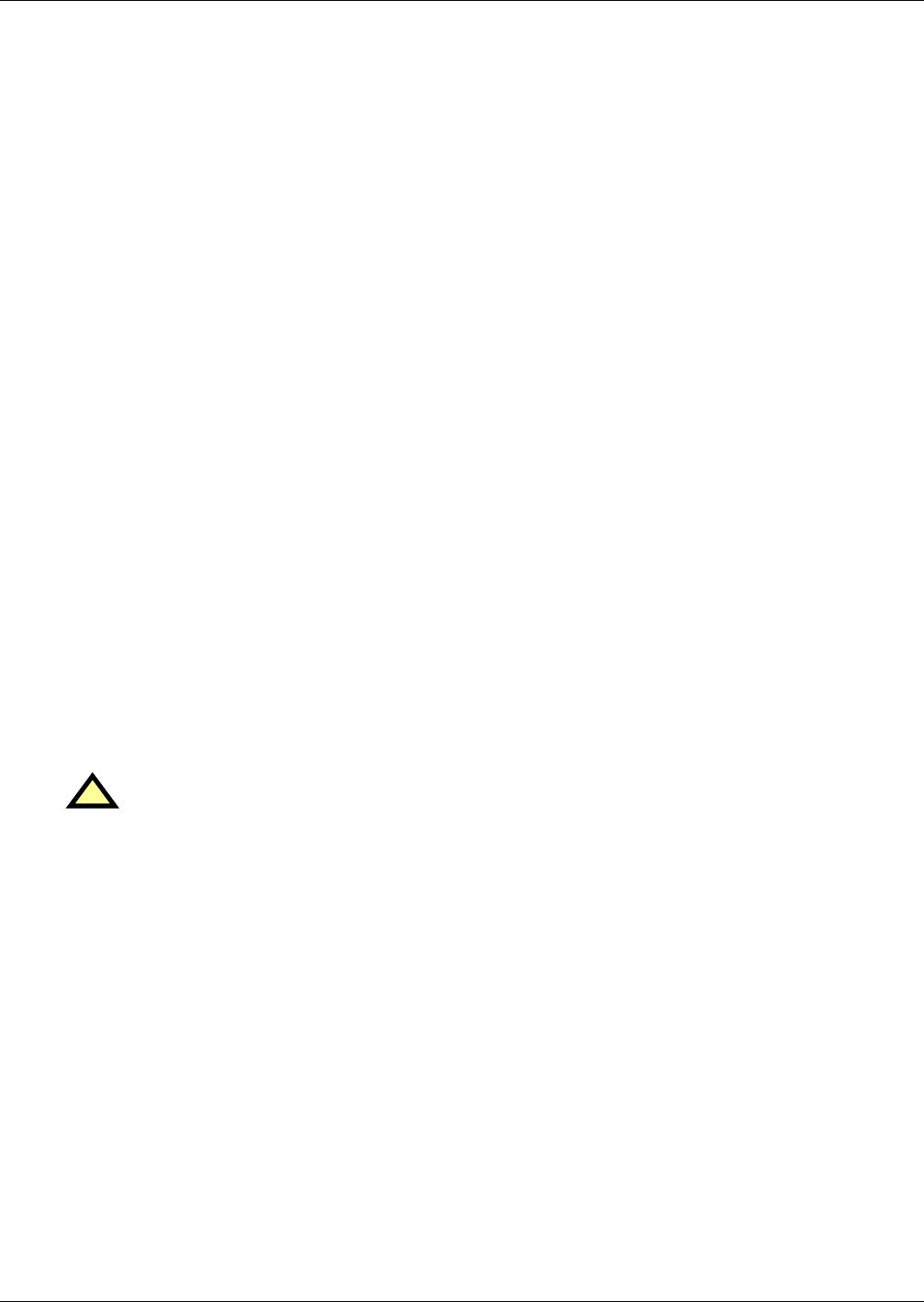
Introduction
5
1.4 Modes of Operation
Refer to 2.0 - Theory of Operation and 3.0 - Operation for more details.
1.4.1 Normal—Load on UPS
The utility AC source provides power to the rectifier/charger in the UPS module. The rectifier/charger
converts the utility AC power to DC and supplies DC power to the UPS module inverter while simul-
taneously float charging the battery plant. The UPS inverter converts DC to AC and furnishes AC
power to the critical bus.
1.4.2 Input Power Failure
If the utility source power fails or is outside the acceptable range, the battery plant becomes the pri-
mary supplier of DC power to the inverter.
1.4.3 Recharge
After the utility source power is restored or an alternate power source becomes available, each recti-
fier/charger slowly walks-in to once again power the inverters and recharge the battery plant.
1.4.4 Overload
Overloads in critical systems may be caused by inrush currents during connected equipment start-up
or by faults in the critical load or distribution network. The Liebert Series 610 UPS system can main-
tain full output voltage regulation while sustaining the following overloads:
• Up to 150% for 30 seconds
• Up to 125% for 10 minutes
• Up to 104% for an indefinite period of time
For momentary faults above 155% of rated current, the static bypass switch turns on for 40 millisec-
onds to supply power from the bypass source. Up to 1000% of the rated current can be supplied for
less than one cycle, while up to 500% of rated load can be sustained for the full 40 milliseconds of
pulsed-parallel operation.
The critical load remains on the UPS module for the above conditions. If the UPS system overload
capacity is exceeded, an automatic transfer to bypass is initiated, which closes the bypass circuit
breaker and opens the inverter output circuit breaker.
1.4.5 Bypass—Internal
The UPS control logic initiates an automatic transfer to the bypass source if the overload-current-ver-
sus-time curve is exceeded or if specified UPS system faults occur. You can also manually transfer the
load to the bypass (without interruption) if you must take the UPS module out of service for mainte-
nance.
The internal bypass will allow most key components and operating modes to be checked without dis-
turbing the critical bus. However, certain key power-carrying components, such as the output and
bypass circuit breakers, will require isolation through an external maintenance bypass cabinet or
complete system shutdown to maintain 100% critical load operation.
1.4.6 Maintenance Bypass
The installation of a Maintenance Bypass Cabinet or Assembly is recommended to allow you to totally
isolate the UPS from all power sources. Use of the Maintenance Bypass is described in 3.0 - Opera-
tion.
1.4.7 Off-Battery
The battery plant can be disconnected from the rectifier/charger by using an external Module Battery
Disconnect (MBD) circuit breaker. The UPS continues to function normally, though it does not have
power outage back-up capability until the battery plant is reconnected.
!
CAUTION
Whenever an overload occurs, it is imperative to determine the cause of the overload.



